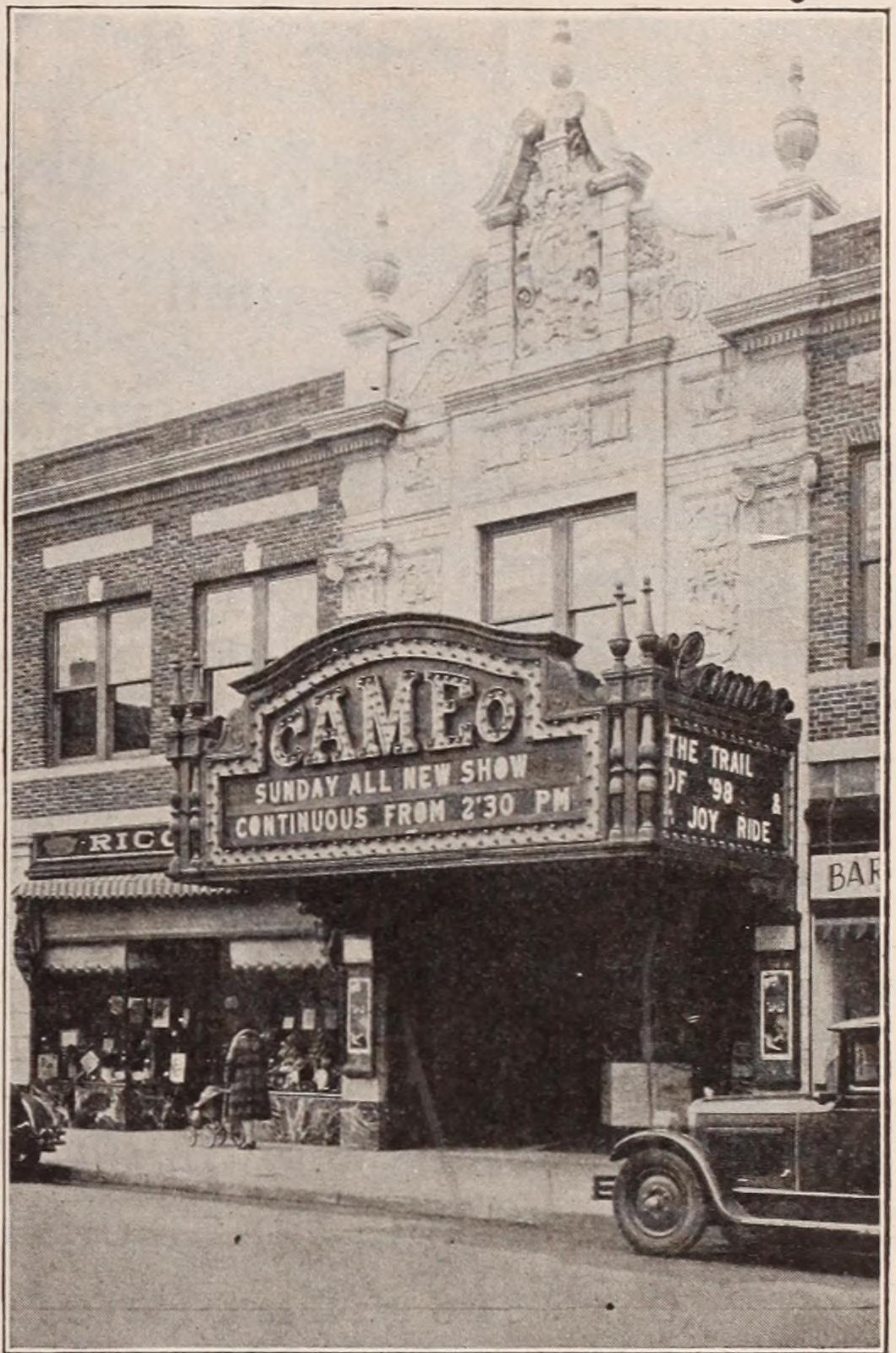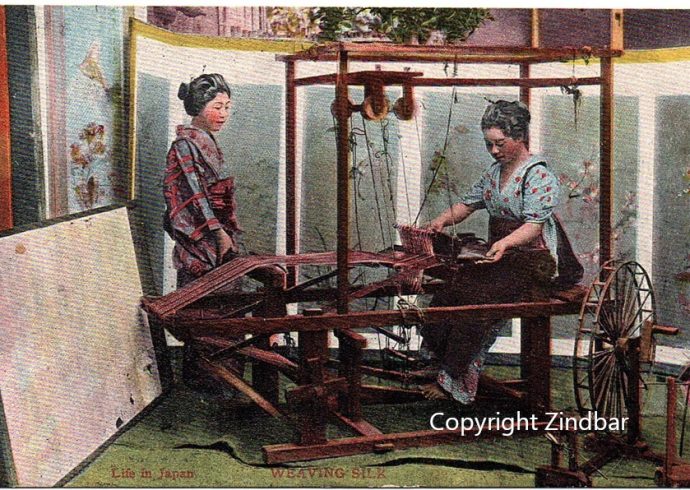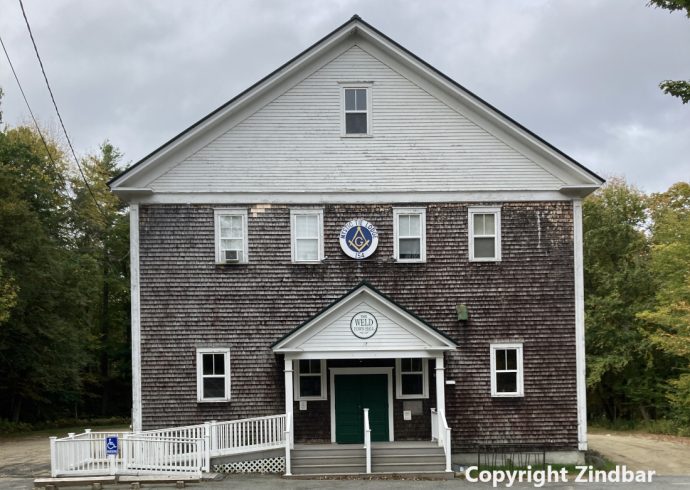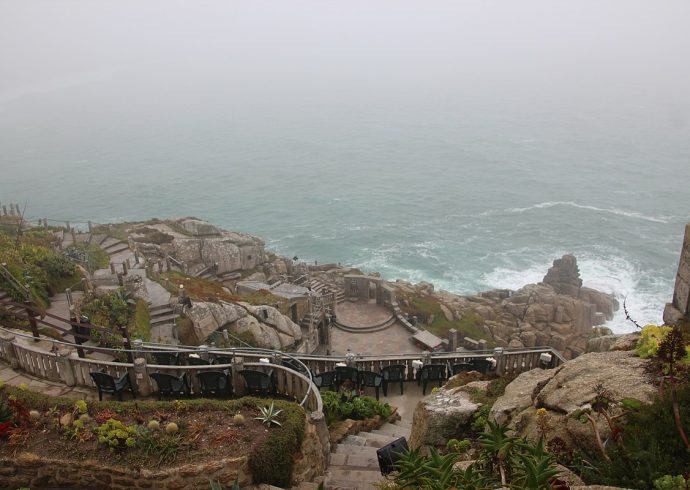
Bristol, Connecticut has a rich history when it comes to the exhibition of silent films and movie palaces. The city’s industries included clock making, brass factories, and tool manufacturing, which in turn created a substantial economy downtown which lasted well into the 1960’s. Main Street was the spot for shopping at retail stores of all kinds and movie houses which began in the early 1900’s. There was no shortage of movie palaces for a patron to decide to attend during the weekend. In 1910, for example, the population of Bristol, CT was 9,527 with six movie houses; by 1920, the town doubled in population to 20,620 with five movie houses in operation. By 1925, D. A. Pietroroia organized the Colonial Theater Company, the umbrella organization for Bristol Theater, Cameo, Palace, and Princess.
Changing attitudes towards patronizing entertainment changed as early as 1907, when cities like New Britain and Hartford started the allowing of silent films to be exhibited on Sunday. While it tried to catch on in Bristol, according to an article in The Moving Picture World, July 1907, movie Theaters were quickly shut down due to local authority.
One long-forgotten silent film movie house of Bristol has been rediscovered and is included in the list below. Please note that movie theatres in Bristol, Connecticut which were built initially for sound films are not included below.
Bristol Opera House
Can you imagine a skating rink being transformed into an opera house? That is what Bristol, CT citizen Charles F. Michael originally built near his hotel at 31 Laurel St. in Bristol, CT in 1886. By 1889, he transformed it into an opera house where vaudeville acts and silent film were forms of entertainment. Local organizations would put on plays and opera performances such as “The Mikado”. In 1895 the Bristol Opera House burned down but one year later a new three-story high opera house was built of wood on the same site, a cost of $20,000.00. The seats on the first floor of the opera house were originally moveable, but by 1907, the flat floor was transformed into an incline, standard for most Theaters of the time, for stage and screen viewability from the audience.
In 1909 the Bristol Opera House became a movie palace under its new managers, Renn and Collins. Vaudeville was the last form of entertainment at this movie house but was losing ground as moving pictures were becoming the new form of national entertainment. Early on the morning of December 4, 1912 the Bristol Opera House caught fire and burned down, according to The Hartford Courant. The estimated loss was $35,000.00.
Bristol Theater
Located at 164 N Main St., Bristol Theater occupied the same building that was formerly the Bristol Armory in the early 1900’s. The movie house with a seating capacity of 1,100 started exhibiting silent films in 1915. In 1918, theater manager L. J. Saperstein left his position to join the military service as the United States entered World War 1. Popular silent films like “Stella Maris” (1918) with Mary Pickford, “The Highest Bid” (1916) with William Russell, “Foolish Wives” (1922) with Erich von Stroheim, “Lass of the Lumberlands” (1916) with Helen Holmes, “Conquering Power” (1921) with Rudolph Valentino and “Driven” (1923) with Burr McIntosh were exhibited. With the advent of synchronized sound film, Bristol Theater was converted to accommodate the new film format for its audiences.
On January 13, 1940, Bristol Theater burned down, a $50,000 loss. Bristol Theater survived two previous fires; the first when it was transformed into a movie palace from the armory; the second, in 1927, according to The Journal (Meriden, CT) January 13, 1940.
Cameo Theater
The Cameo Theater had a seating capacity for 1800, the largest for its time when it opened in October 1927 in Bristol CT. The Cameo was built for $300,000.00 by Colonial Theaters Inc. Located at 79 Main St, the movie house also exhibited vaudeville acts during its early years. Some of the silent films exhibited were “Little Wildcat” (1929) with Audrey Ferris, and “Danger Street” (1928) with Warner Baxter.
An advertisement for Exide Emergency Batteries in Exhibitor Herald World, August 3, 1929 includes a shot of the front of the Cameo Theater as being a client of their product, while another ad in The Hartford Courant, October 23, 1927 promotes space for stores and offices to attract cinema patrons to shop before or after a show.
In 1960, the Cameo Theater was sold to Southern New England Telephone Company for $155,000.00 by its owner, Stanley Warner, a subsidiary of The Connecticut Theatrical Corporation. While this movie house exhibited silent film for only a few years, it continued to exhibit sound films before it closed down and was demolished in 1963.
Empire Theater
This long-gone and forgotten (not included at the Cinema Tour or Cinema Treasures websites) movie palace in Bristol, CT was located at either 82 or 84 North Main St. However, newspaper listings for Empire Theater exist, primarily from The Hartford Courant. White’s Public Market was at 83 North Main St, and The Surprise Store was at 87 North Main St, with Empire Theater opposite these stores somewhere in between, according to advertisements in The Hartford Courant, December 20, 1914.
Despite being in operation for only a brief six years, the Theater did have a colorful history. “Three Weeks” (1914) with Madlaine Traverse, based on the Elinor Glynn novel of the same title, and “The Hypocrites” (1915) with Courtenay Foote were just two of the many silent films exhibited at Empire Theater. These two silent films also received local protesting from some patrons who considered the films unsuitable for a town like Bristol, Connecticut, mentioned in an article in The Hartford Courant, May 18, 1915.
Empire Theater opened in August 1913 and had a seating capacity of 700. The movie house was run by James Brezinski. The Empire was finally put up for auction on April 19, 1919, going out of business. (The Hartford Courant, April 18, 1919)
Palace Theater
The Palace Theater in Bristol, Connecticut did not have a stable history, experiencing multiple closings and ownership changes since its earliest years until the final closing in 1928. Built some time during the early 1900’s, the Palace Theater was located at 114 N Main St. The Palace closed at some point before 1919 when it switched to new management, according to The Moving Picture World, August 16, 1919. In 1920, the Palace Theater was purchased by Davis A. Appell and Paul Corosino for $65,000.00, two Bristol, CT residents. Silent films such as “Perjury” (1921) starring William Farnum and “Footfalls” (1921) with Tyrone Power Sr. were exhibited at the Palace Theater. By 1925, Palace was owned by Colonial Theater Company, who also owned the Princess Theater in Bristol at the same time.
Between 1926 and 1927, Palace Theater was not in operation; however, it finally got a new owner by May of 1927, Arthur H. Lockwood. In 1928, the Palace Theater was under ownership by Colonial Theaters and sold to Jacob Rosenblatt for around $35,000.00 on the intent he utilize the property for stores and business offices. The Palace Theater finally closed when the Cameo Theater opened in 1927 on Main St.
Pastime/Star Theater
Erroneously identified in its address of 200 Main St, the actual address for Pastime Theater was 252 Main St., also known as the Star Theater. According to The Film Index, September 17, 1910, Pastime Theater was located at the corner of Main St and High St in Bristol. The theater was most likely built in the early 1900’s and switched ownership and management more than a few times throughout its run.
In early September 1910, Pastime Theater had a new manager, R. E. Holbrook of Ansonia, CT, with Robert H. Norton as one-third owner of the property. Both matinee and evening showings were available, and the most popular films of the day were exhibited. By October of 1910, however, Pastime had a new manager, William F Porter. In 1911, Pastime had still a new owner, Slocum and Chappell, who renamed it The Star Theater.
Star Theater was purchased by Warren A. Gentner of Hartford but sold in June 1920 to Oscar Harder, a shoe store owner in Bristol. Harder ran the movie house seven days a week compared to the former two days of operation, Saturday and Sunday evenings. It is unknown which year Star Theater closed.
Princess/New Princess Theater
The Princess Theater was probably the first movie house in Bristol, Connecticut to regularly exhibit films a minimum of at least four days a week. Add in the factor that this movie house aggressively advertised its showings in The Hartford Courant during its run compared to the other ones in Bristol, and you have the recipe for success. Located at 12 Riverside Ave. in Bristol, Connecticut, Princess was built in the early 1900’s. In 1915, John Henry Yost managed the Princess, which exhibited some of the most popular silent films of the decade: “The Lion and the Mouse” (1914) with Ethel Clayton and Gaston Bell, “The Moth and the Flame” (1915) serial with Stewart Baird, “The ManxMan” (1916) with Elisabeth Risdon and Henry Ainley, a British silent film which turned out to be a box-office hit in the United States, and “Polly of the Circus” (1917) with Mae Marsh.
In 1920, Lewis Brown managed the Princess Theater. By 1921 the theater was called The New Princess. In 1922, the Princess Theater has new ownership under two women: Ida Horwitz and Nettie Rotstein, two New Britain residents. In 1925, Princess was owned by Colonial Theater Company, who also owned the Palace Theater in Bristol. Like the Palace and Pastime Theaters, Princess closed down by 1929.
Image Credit: Exhibitors Herald World, August 3, 1929. Lantern Media History.


